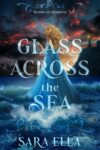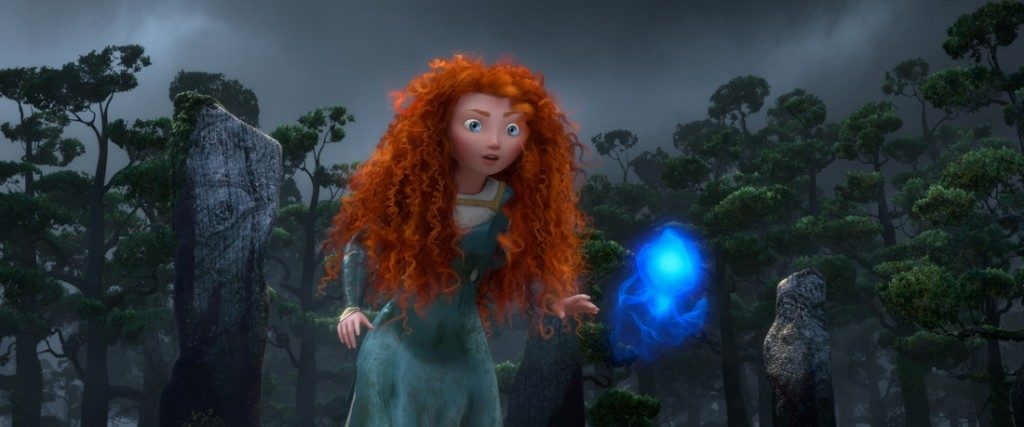Update: ‘Merida Makeover’ Debate Rides On
Disney is backing off its (supposed?) makeover of Merida from Disney/Pixar’s Scottish-fantasy film Brave (2012) and the film’s creator and co-director has also had things to say about it. That follows an online petition whose signers asked Disney not to force the spunkier, less-orthodox heroine into yet another (apparent) beauty-queen and even sultry corset-constrained mold.
 As mentioned in our May 11 news item, I myself signed this petition, not from Christian or “secular” fearmongered motives, I hope, but for this reason:
As mentioned in our May 11 news item, I myself signed this petition, not from Christian or “secular” fearmongered motives, I hope, but for this reason:
Every little bit of fun culture that we cede to ridiculous sexualization is an unloving act against children and people. We will increasingly worship sensualized icons rather than love real humans.
Since then, Disney has defended the made-over Merida as a one-off image, not a marketing template. But folks still aren’t happy:
On Tuesday, Carolyn Danckaert, the activist behind last week’s wildly popular online petition to “Keep Merida Brave,” announced via Facebook news from supporters that “the new makeover version of Merida is no longer appearing on Disney.com.” But the controversially modified version of the princess still appeared on Target’s Disney princess website, where new product tie-ins are sold.1
Meanwhile, Brave creator and co-director Brenda Chapman (I was wondering if she would speak up) also thinks this worth a controversy:
There is an irresponsibility to this decision that is appalling for women and young girls[. …] When little girls say they like it because it’s more sparkly, that’s all fine and good but, subconsciously, they are soaking in the sexy ‘come hither’ look and the skinny aspect of the new version. It’s horrible! Merida was created to break that mold — to give young girls a better, stronger role model, a more attainable role model, something of substance, not just a pretty face that waits around for romance.2
Note that Disney spokesmice haven’t said: I can’t see the difficulty, really; maybe this is a lot of controversy over nothing. It may well be. And some Disney staff may well be thinking that — but if you’re a corporation, you can’t say that.
Of course, there are arguments to be made that this is indeed one of those synthetic controversies. Some Spec-Faith readers are still making them, in response to Keep Merida Brave on May 11.
For example, this from Timothy Stone:
Her “makeover” persona looks older and so on, but I would hardly think of her as sexed up. It looks like the same women, one in her teens and the other older. If a real-life girl looked like Merida in the movie and the first picture, you would expect her to likely resemble the second pic once she got older.
It’s not that I don’t share the concerns about the over-saturation of sexual imagery in our culture. I do, as any friends could attest to. I just don’t think this is a case of it.
And this from Kaci Hill, also a former SF contributor:
I don’t think Merida looks like a dominatrix in that second image. She’s wearing makeup and has a fancy dress on – neither of which she’d actually wear, apparently, which is the biggest – and probably only – sin.
A few thoughts.
1. This Disney fantasy-film princess-makeover isn’t a solo incident.
I first heard of it from my wife, who at the time was working in a children’s store. All the princess products included amped up versions of Disney-princess film characters, designed to fit a certain contemporary-beauty/sexuality template. In her words, they were all given lower-cut dresses, Bratz-doll eyes, and push-up bras.
2. However, the Merida changes strike fans as even more annoying.
Why? because many fans thought this character a welcome departure from the usual Disney princess storyline: spunky girl has her dreams come true by marrying a prince, one way or the other. Merida’s story in Brave is very different.
3. Critics aren’t saying the outfit looked “dominatrix.”
Rather the criticism goes that she’s been made curvier, has the effect of a push-up bra, and certainly has those Bratz-doll-like eyes.
4. Perhaps the criticism is not so much a simplistic “she’s too sexy now.”
It also isn’t, or shouldn’t be, as simple as “the character wouldn’t do this.” It’s marketing. The image is more like an icon, not a character.
5. Instead the criticism is, or should be, something like the following:
In this marketing image, Merida is being made to fit a particular Disney-princess template. At best that’s needless, at worst it’s an attempt to reject even slightly variant beauty types in all Disney films’ female leads, in favor of a what-counts-as-beauty-now mold.
6. Ironically, this is happening even as many women are enjoying looking back to and experimenting with previous eras’ concepts of beauty.
Thanks in part to the samples of history reflected on the internet, “Vintage” is in, particularly styles or style-tributes derived from the 1950s and 1980s. So to force all the princess into a singular 2010s-only “fashion” is both uncreative and missing out on a trend.
How might Disney make waves, gain positive attention, and show itself more “progressive” in the right way? Perhaps by restoring Snow White to her 1930s look, Cinderella and Aurora to their ’50s look, Belle to her ’90s look, etc., showing a true picture of diverse beauty (even with all these idealized versions!) for fans to see.
7. However, all this debate could be reflecting a pagan view of culture.
The Yahoo article references the author of a book called Cinderella Ate My Daughter. Its title gives the impression, not unlike many evangelical Christians, that we are hapless subjects of this thing called Culture unless we Fight Back. Its description fleshes this out:
The rise of the girlie-girl, warns Peggy Orenstein, is no innocent phenomenon. Following her acclaimed books Flux, Schoolgirls, and the provocative New York Times bestseller Waiting for Daisy, Orenstein’s Cinderella Ate My Daughter offers a radical, timely wake-up call for parents, revealing the dark side of a pretty and pink culture confronting girls at every turn as they grow into adults.
Cinderella, either in her idealized-1950s-fantasy version or any 2010s makeover, did not eat anyone’s daughter. Sin nature has done this. Sin nature would “eat” us all, using pop-culture sin-spice as mere flavoring — that is, if not for the counter-Kingdom of Christ.
- Update: Disney’s Response To Princess Merida Controversy At Odds With Petitioners, Shine.Yahoo.com, May 16. ↩
- ‘Brave’ creator blasts Disney for ‘blatant sexism’ in princess makeover, Marina Independent Journal, May 11. ↩

































Yes, but what does that mean practically, in regards to art and aesthetics, or culture, or whatever other topic may be relevant? “How should we then live?” (I don’t have enough experience or understanding to have any particular opinion on Merida. I don’t think that any image that looks like the made-over Merida is necessarily bad on its own.)
“Let your beauty be shown in good works…” Selfish Merida was not a great example of that to begin with. A fun show but not a godly example. We can watch it and laugh at the story and cringe at the trouble her rebellion gets her in. Not a high role model, just an entertainment.
One of the opinions on this that I liked best was by Jenny Lawson, The Bloggess (but I’ll warn you that it’s expressed with casual swearing). She agrees that, yes, this is stupid, but it probably doesn’t matter that much because a corporation isn’t really the direction we should look to for teaching daughters how to be strong women.
(I already made a disclaimer about language): http://thebloggess.com/2013/05/two-uncomfortable-truths-new-merida-looks-a-little-whorey-less-people-care-about-this-than-you-would-think/
I can see your point, though I disagree. But another question is, why is she a “Disney princess”? Why does everyone have to be a “princess” for Disney? Is Mala the lioness going to be made a “Disney princess?
That said, I do agree we are going more towards the culture of encouraging thinness and “sexiness” too much. I just don’t think this is a case of it. I personally think that neither skin or chubby is good, but NATURAL is good. If someone is naturally skinny or even waifish, then so be it. If someone is naturally bigger, then so be it. If either one is do to it being the natural body type (and not due to some eating disorder of over- or under-eating), then go with it. Though I will prefer that I think Merida’s original body shape is better in my opinion.
::Snicker:: Nala was cool. 0=)
3. Critics aren’t saying the outfit looked “dominatrix.”
Rather the criticism goes that she’s been made curvier, has the effect of a push-up bra, and certainly has those Bratz-doll-like eyes.
I picked the term because that’s what everyone was making it sound like. And Bratz-doll and “sexy” just don’t really fit together for me.
But if we’re going to be really picky, Belle wears a fancy dress for all of two points in the story (and, frankly, I just don’t think Belle cared what she wore) and the gold dress is the one everyone puts her in despite her usual attire being a plain blue peasant dress, apron, and glasses if needed. Jasmine at least kept her blue outfit instead of the red one Jafar makes her wear; and Ariel is shown more often in mermaid form or with the fancy dress on instead of, again, her simple everyday attire.
Of course, in all those cases, the girls had actually worn said outfits (Jasmine never wears a dress, save maybe the white one).
5. Instead the criticism is, or should be, something like the following:
In this marketing image, Merida is being made to fit a particular Disney-princess template. At best that’s needless, at worst it’s an attempt to reject even slightly variant beauty types in all Disney films’ female leads, in favor of a what-counts-as-beauty-now mold.
And if we’re going to be picky, the reason I liked Belle, Jasmine, and Mulan is because they aren’t the stereotypical damsel in distress (like Aurora – who’s name is not freakin’ “Beauty,” Shrek writers – Snow White, and Cindrella). (Then, they were cartoon characters; I didn’t think about them that way.)
But I disagree that “Disney role models” have anything to do with “princess franchise.” Ironically enough, Jasmine, despite her running-away moment, never actually rebels against her father; Belle sacrifices herself to save her father’s life (and gets a double-hitter when she helps Beast heal in the end); and Mulan breaks societal convention (in which she also by default risks her life) solely to save her father; Tiana sacrifices her personal dreams and interests in favor of supporting her family.
I haven’t seen Brave yet, but I’m very much hoping Merida fits that category.
And, really, having worked consistently with 1-9 year olds for the last year….Most of these girls just go “pretty dress.” The girliest one I see favors Rapunzel, who, while not the toughest princess, is probably among the few who actually behave like actual children. Rapunzel’s probably the most “fun” of them, as long as you steer clear of the frying pan. 😉
Yah, Kaci. Good thing Flynn (er, Eugene, I mean) had such a hard head, huh? 😉 Seriously, as a former Army Medic, I was watching that scene wincing every time she hit him and thinking how he should have been dead soooooo many times over by the end of the scene. 😛
Technically, he did finally die. 0=)
Only in animation…. 😉